Equipment List Samples
-

Agriculture Equipment List
download now -

Equipment List for Business
download now -
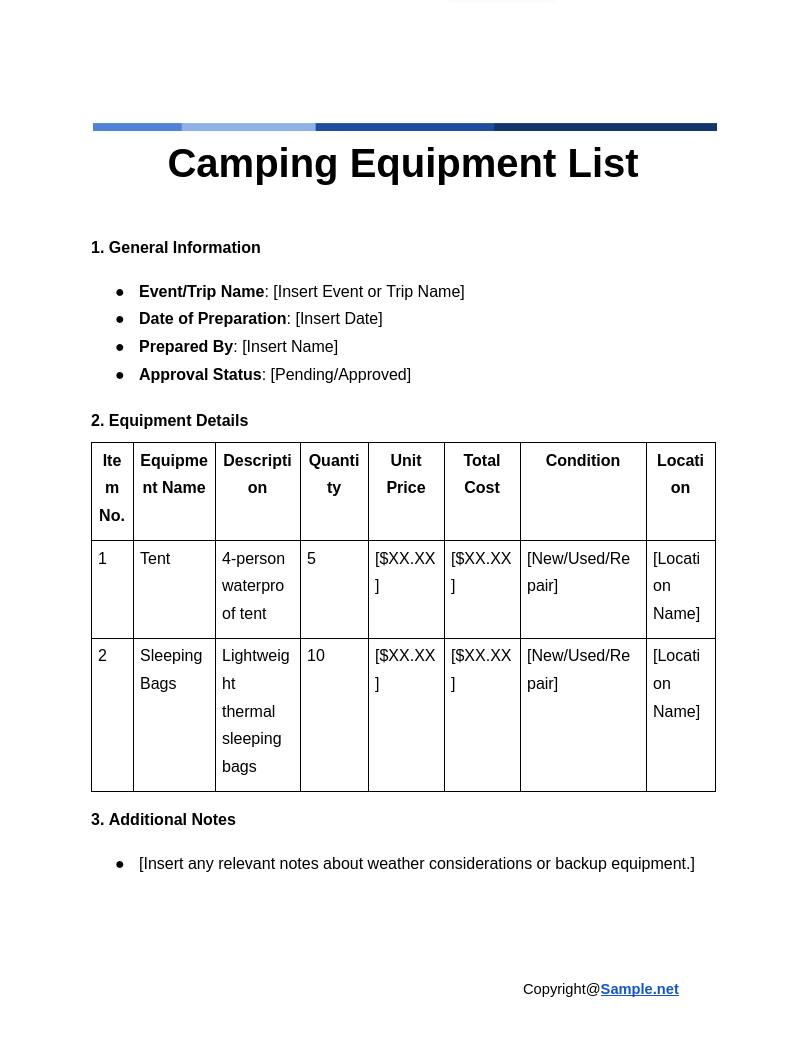
Camping Equipment List
download now -

Bakery Equipment List
download now -

Equipment List Template
download now -

Physical Therapy Maintenance Equipment List
download now -

Daily Equipment Inventory List
download now -

Asset Safety and Equipment List
download now -

Standard List of Medical Inspection Equipment
download now -

Equipment Preventive Maintenance List Form
download now -

Equipment Heavy Equipment List Format
download now -
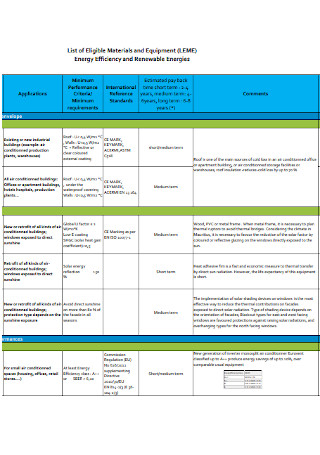
Printable List of Materials and Equipment
download now -

Equipment Kitchen and Instrument List
download now -

Film Production Medical Equipment List
download now -

Employee Equipment List for Surgery
download now -

Biomedical Video Production Equipment List
download now -

Furniture Event Equipment List
download now -

Monthly Vehicle Equipment List
download now -
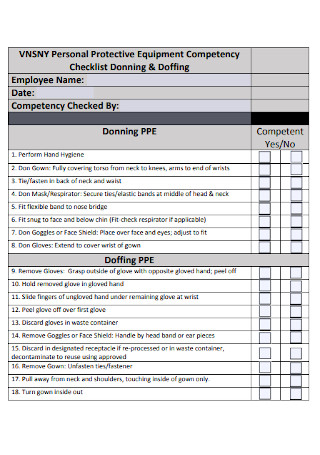
Equipment Excavator Competency List
download now -

Measurement Tools Equipment List
download now -

Weekly Health Equipment List
download now -

Automation Equipment Sheet List
download now -

Filmmaking Photography Equipment List
download now -

Sample School Equipment List
download now -

Materials and Equipment List
download now -

Vehicle Machinery Equipment List
download now -
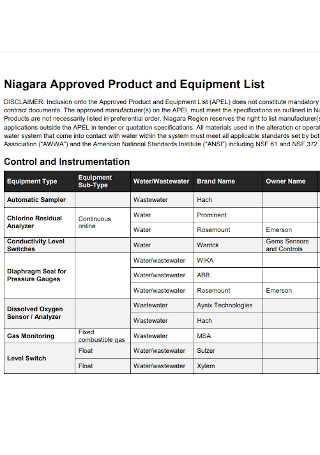
New Hire Product and Equipment List
download now -

Hospital Equipment List Template
download now -

Field Day Equipment List
download now -

Racing Equipment List Template
download now -

Construction Equipment List
download now -

Approved Equipment List
download now -

External Assessment Equipment List
download now -

Master Minimum Equipment List
download now -

Medical Equipment Reference List
download now -
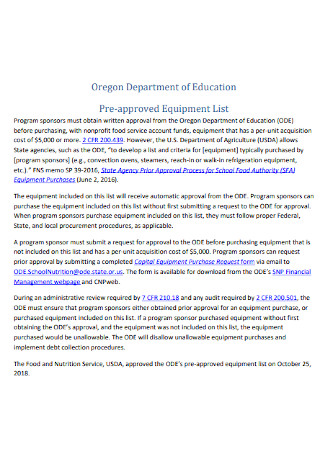
Pre-approved Equipment List
download now -

List of Equipment in Workshop
download now -

GYM Equipment List Template
download now -

Sample Equipment List Template
download now -
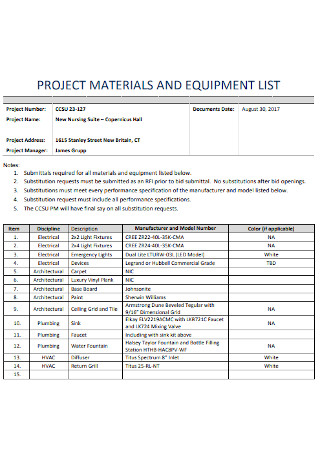
project Materials and Equipment List
download now -

School Equipment List Template
download now -

Fitness Center Equipment List
download now -
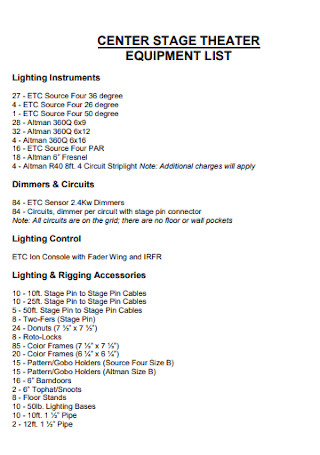
Stage Theater Equiipment List
download now -

Water Well Equipment List
download now -

Commercial Ambulance Equipment List
download now -

Essential Equipment List Template
download now -

Laboratory Equipment List
download now -

Basic Equipment List Example
download now -

Partial Equiipment List Template
download now -

Park Equipment List Template
download now -

Restaurent Equiipment List Template
download now -

Electronics Station Equipment List
download now -

Formal Authorized Equipment List
download now -

Preferred Electrical Equipment List
download now -

Key Equipment List Template
download now -

Recess Equipment List Template
download now
FREE Equipment List s to Download
Equipment List Format
Equipment List Samples
What is an Equipment List?
What Are the Common Classifications of an Equipment List?
How to Create a Dependable Equipment List
FAQs
What are the main categories of an equipment list?
What industries benefit from equipment lists?
What are the four types of inventory?
How does an equipment list benefit large-scale projects?
What details should be included in a professional equipment list?
What role does an equipment list play in budgeting?
How can digital tools improve the creation of equipment lists?

Download Equipment List Bundle
Equipment List Format
1. General Information
- Project/Department Name: [Insert Project or Department Name]
- Date of Preparation: [Insert Date]
- Prepared By: [Insert Name]
- Approval Status: [Pending/Approved]
2. Equipment Details
| Item No. | Equipment Name | Description | Quantity | Unit Price | Total Cost | Condition | Location |
|---|---|---|---|---|---|---|---|
| 1 | [Equipment Name] | [Detailed Description] | [Quantity] | [$XX.XX] | [$XX.XX] | [New/Used/Repair] | [Location Name] |
| 2 | [Equipment Name] | [Detailed Description] | [Quantity] | [$XX.XX] | [$XX.XX] | [New/Used/Repair] | [Location Name] |
3. Additional Notes
- [Insert any relevant notes about usage, maintenance, or procurement.]
What is an Equipment List?
An equipment list is a detailed document or spreadsheet that outlines all the tools, devices, and machinery required for a particular project, task, or event. It typically includes item descriptions, quantities, specifications, and sometimes the costs. This list ensures efficient resource allocation, proper budgeting, and smooth operations. Equipment lists are widely used in industries like construction, healthcare, events, and education to facilitate planning and logistics while avoiding oversights. You can also see more on Inventory Lists.
What Are the Common Classifications of an Equipment List?

It is essential to note that the classification, content, and format of an equipment list doesn’t have to be the same for every company. It can be personalized based on what set of data your business is concerned regarding equipment information. But when it comes to standard examples, these are the basic equipment list classifications:
How to Create a Dependable Equipment List

Making a proper equipment list is a critical step for business management operations. You already know how important it is as well as its essential components. So are you ready to create your own equipment list to run an efficient company with better equipment inventory flow? Kindly follow these simple steps:
Step 1: Define the Objective
Start by identifying the purpose of the equipment list. Are you planning for a construction project, an event, or a personal task? This step helps in understanding the scope and type of equipment required. You can also see more on Material Lists.
Step 2: Categorize Equipment
Divide the required tools into categories like primary, secondary, or optional. For example, construction may need categories like heavy machinery, hand tools, and safety gear. This organization simplifies the list.
Step 3: Specify Quantities and Details
For each item, list the quantity needed, technical specifications, and any brand preferences. Be specific, as this information will be critical for procurement and budgeting.
Step 4: Include Costs and Sources
Research prices for each item and note potential suppliers or rental companies. This ensures that the list is not only functional but also cost-effective. You can also see more on Work Lists.
Step 5: Review and Update
Before finalizing, review the list to ensure all items are included and accurate. Update the list periodically to reflect changes in requirements or inventory.
An equipment list is vital for any project’s efficiency and success. By identifying and organizing essential tools, you can achieve streamlined operations and minimize delays. You can also see more on Task Lists.
FAQs
What are the main categories of an equipment list?
There are three main categories of an equipment list and they contain different subcategories. These are:
- Tool information – serial number, description, location, condition, years of service, vendor, quantity, date of purchase, cost
- Issued tools – device serial number, description, issued to, check-in/check-out status, check-in/check-out time, reason, floor manager
- Financial information – date purchased with serial number, current value, operating cost, yearly straight-line depreciation, loan term, loan rate, monthly payment, expected value at end of loan term
What industries benefit from equipment lists?
Any industry can benefit from an equipment list, depending on what each company’s purpose for the list is. Common industries that depend on equipment lists come from the manufacturing, healthcare, construction, school, and office-based company sectors. You can also see more on Project Lists.
What are the four types of inventory?
The four basic types of inventory are raw materials, work-in-process (WIP), finished goods, and maintenance, repair, and overhaul (MRO).
How does an equipment list benefit large-scale projects?
For large-scale projects, an equipment list ensures all stakeholders have clear visibility of required resources. It aids in procurement planning, cost estimation, and scheduling, preventing bottlenecks and ensuring timely project execution. You can also see more on Shopping List.
What details should be included in a professional equipment list?
A professional equipment list should include item descriptions, quantities, specifications, estimated costs, suppliers, and notes on availability. Detailed information helps in smooth operations and accountability.
What role does an equipment list play in budgeting?
It provides a clear estimate of costs, helping managers allocate funds effectively. By detailing each item’s price, it prevents overspending and aligns purchases with project budgets.
How can digital tools improve the creation of equipment lists?
Digital tools like spreadsheets or dedicated software offer templates, automation, and collaboration features. These tools make it easier to organize, update, and share equipment lists across teams. You can also see more on Price List.
